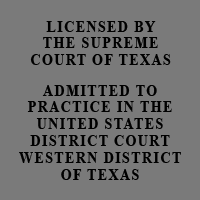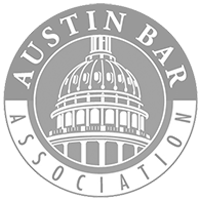Gulf Coast Oil Spill Lawsuits, Toxic Spill Lawsuits, Mass Tort Lawsuits, and Damage to Business and Property Lawsuits by Texas Toxic Mass Tort Lawyer Jason S. Coomer
A mass tort is defined by one or more actors damaging a great number of people by a common wrongful act. Examples of mass tort litigation include a large oil spill, plant explosion, chemical leak, airplane crash, building fire, bridge collapse, dam burst, or dangerous products sold to the public.
If you have suffered a significant loss from the Gulf Coast Oil Spill, another oil spill, or another man-made disaster,, feel free to submit an inquiry or send an e-mail to Texas Gulf Coast Oil Spill Lawyer Jason Coomer. He provides advice to businesses, landowners, and families that have been suffered significant damages including death, catastrophic injury, loss of business, or contaminated real estate by mass torts and man-made disasters.
Gulf of Mexico Oil Spill, Other Large Oil Spill, and Man-made Environmental Disaster in the News
The recent oil spill in the Gulf of Mexico is one of the largest oil spills and environmental disasters in United States history. The impact from this oil spill is expected to poison the many environments; kill many types of fish, birds, and other wildlife; hurt many businesses; contaminate land all along the Gulf coast; and will have a devastating impact on the economy and ecology on Alabama, Texas, Florida, Mississippi, and Louisiana.
Below are some news stories regarding the 2010 Gulf of Mexico Oil Spill, other large oil spills, and other large man-made environmental disasters.
Gulf Coast oil spill could eclipse Exxon Valdez
By CAIN BURDEAU and HOLBROOK MOHR,
Associated Press Writers Cain Burdeau And Holbrook Mohr,
Associated Press Writers – Thu Apr 29, 7:09 pm ET
"VENICE, La. – An oil spill that threatened to eclipse even the Exxon Valdez disaster spread out of control and drifted inexorably toward the Gulf Coast on Thursday as fishermen rushed to scoop up shrimp and crews spread floating barriers around marshes. The spill was both bigger and closer than imagined — five times larger than first estimated, with the leading edge just three miles from the Louisiana shore. Authorities said it could reach the Mississippi River delta by Thursday night...."
"The oil slick could become the nation's worst environmental disaster in decades, threatening hundreds of species of fish, birds and other wildlife along the Gulf Coast, one of the world's richest seafood grounds, teeming with shrimp, oysters and other marine life."
The leak from the ocean floor proved to be far bigger than initially reported, contributing to a growing sense among many in Louisiana that the government failed them again, just as it did during Hurricane Katrina. President Barack Obama dispatched Cabinet officials to deal with the crisis.
Oil Spill Worse Than Exxon Valdez: Oceanographer
Huffington Post First Posted: 05- 1-10
05:14 PM | Updated: 05- 2-10 09:19 AM
"The Gulf Coast spill will have eclipsed the Exxon Valdez in terms of total gallons of oil before the weekend is over -- making it the largest oil spill in U.S. history -- according to calculations made by oceanographer Ian MacDonald after studying aerial Coast Guard photos taken earlier in the week.
MacDonald, a professor at Florida State University who counts "oil and gas development" among his areas of expertise, stopped short of comparing the Deepwater Horizon spill to that of the Alaskan oil tanker, but said Saturday, "The spill is growing. I'm comfortable saying that the size and extent of this slick is 10 million gallons."
Given that just over a million gallons are leaking into the Gulf per day, according to MacDonald's calculations, the spill will shortly top the Exxon Valdez's estimated 11-million-gallon spill. It is almost certain to cost more than the Exxon spill, which cost $3.5 billion for cleanup and another $5 billion worth of lawsuits and other settlements.
The environmental whistleblowers at SkyTruth, which debunked earlier lowball estimates from the government and BP, said the spill will top the Exxon spill by the end of the day Saturday. Federal point man and Coast Guard Admiral Thad Allen didn't dispute the calculations of MacDonald or SkyTruth, but said "any exact estimate is probably impossible at this point."
Choppy seas frustrate effort to contain oil spill
By CAIN BURDEAU and HOLBROOK MOHR,
Associated Press Writers Cain Burdeau And Holbrook Mohr,
Associated Press Writers – Fri Apr 30, 7:57 pm ET
"MOUTH OF THE MISSISSIPPI RIVER – High winds and choppy seas frustrated efforts to hold back the oil spill seeping into Louisiana's rich fishing grounds and nesting areas Friday, and the government desperately cast about for new ideas for dealing with the nation's biggest environmental crisis in decades."
"President Barack Obama, meanwhile, halted any new offshore drilling projects unless rigs have new safeguards to prevent a repeat of the disaster that was set in motion when an offshore platform exploded and sank 50 miles out in the Gulf of Mexico."
"As the mile-deep BP well continued to spew an estimated 200,000 gallons of crude a day, one of more than two dozen lawsuits filed in the wake of the explosion claimed it was caused when workers for oil services contractor Halliburton Inc. improperly capped the well. Halliburton denied it...."
"The spill — a slick more than 130 miles long and 70 miles wide — threatens hundreds of species of wildlife, including birds, dolphins and the fish, shrimp, oysters and crabs that make the Gulf Coast one of the nation's most abundant sources of seafood. Louisiana closed some fishing grounds and oyster beds because of the risk of oil contamination...."
"According to a 2007 study by the federal Minerals Management Service, which examined the 39 rig blowouts in the Gulf of Mexico between 1992 and 2006, cementing was a contributing factor in 18 of the incidents. In all the cases, gas seepage occurred during or after cementing of the well casing, the MMS said."
"At least 1.6 million gallons of oil have spilled, according to Coast Guard estimates."
BP Official - Open Heart Surgery at 5,000 Feet; Believes
Cause is Failed Equipment
ABC News Senior White House Correspondent
Jake Tapper May 02, 2010 9:47 AM
"BP America Chairman and President Lamar McKay told me efforts to trigger the blowout preventer to stop the flow of oil from the sea floor are like performing “open heart surgery at 5,000 feet in the dark with robot-controlled submarines.” During my exclusive “This Week” interview, McKay said he believes the cause of the explosion on the Deepwater Horizon oil rig that led the loss of 11 lives and to its eventual sinking was “a failed piece of equipment”. McKay added, “We don't know why it failed yet in this contracted rig.”
McKay said BP, oil industry and government partners are working on four fronts to manage the massive spill: 1) stopping the leak at the source, 2) working on a containment system to collect the oil below the surface and channel the flow through a pipe, 3) fighting to keep oil from washing up on shore and 4) dealing with the clean-up of any oil on and off shore.
A containment dome, McKay said, has been fabricated and is in the final engineering phase. McKay said he expects the dome to be deployed in 6-8 days.
Estimates of how much oil is emanating from the sea floor are “very difficult,” McKay said, “because you can’t measure [it] in any way accurately.” He added that “there is a large uncertainty range” around the estimate of 5,000 barrels per day that is said to be flowing from the well."
Top 10 worst oil spills Oil spills can pollute the air and
water and alter the ecosystem for years
By Remy Melina updated 11:45 a.m. CT,
Thurs., April 29, 2010
"The oil gushing from the well where the Deepwater Horizon oil rig exploded and sank is now spreading through the Gulf of Mexico. Oil spills can kill wildlife, pollute the air and water, and alter the ecosystem for years to come. Many of us think of the Exxon Valdez oil spill as a particularly bad one, but with about 42,800 tons of oil spilled, it doesn't rank as one of the 10 worst ever."
America’s Top 10 Worst Man Made Environmental Disasters
by Stephanie Rogers
"Humans have turned screwing up the earth into an art form, skillfully wreaking havoc on the land, water and air through negligence, lack of concern or even the greedy desire to profit at all costs. American corporations are especially adept at causing severe damage to the environment and human health, and some of the worst offenders – including Exxon Mobil, Monsanto and W.R. Grace – have, by and large, gotten away with it.
From knowingly dumping toxic chemicals into a stream where children play to willfully ignoring the potentially devastating weaknesses of their own facilities, men have managed to create destruction on earth that rivals the wrath of Mother Nature herself. Here are America’s top 10 worst environmental disasters caused by people.
10. Gulf of Mexico Dead Zone
American farmers love their chemical fertilizers and pesticides, and apply them liberally to their crops. Unfortunately, these chemicals – along with nitrogen-rich livestock waste – seeps from farmlands along the Mississippi River into the water and eventually, down into the Gulf of Mexico, where they have led to an oxygen-starved “dead zone” the size of New Jersey. Ocean dead zones cannot support sea life.
Nitrogen in the chemicals and animal waste spur the growth of algae, which is eaten by zooplankton. Those microscopic creatures then excrete pellets that sink to the bottom of the ocean and decay, a process that depletes the water of oxygen.
Researchers set out last July to study the dead zone, taking water samples and measuring the total affected area. Some water samples showed no oxygen at all, and smelled of hydrogen sulfide, a rotten egg smell that indicates organic sediments on the sea floor.
The dead zone has grown steadily over the past few decades. Though it tends to disappear in October once cold weather sets in, there’s a “legacy” left behind due to the fact that not all organic matter on the bottom decays in any given year. This means that even if the same amount of nitrogen is released into the Gulf year after year, the dead zone will get larger.
A recent study identified many of the sources of the nitrogen runoff along the Mississippi River, and the government plans to help states focus their pollution-reduction efforts to prevent some of the runoff from ending up in the river.
9. Great Pacific Garbage Patch
The Great Pacific Garbage Patch, also known as the Pacific Ocean Trash Gyre, Eastern Garbage Patch or Pacific Trash Vortex, is a huge swirling mess of plastic in the North Central Pacific Ocean estimated by some to be the size of the United States. In fact, it’s even been referred to as the world’s largest garbage dump. The Algalita Marine Research Foundation found in 2008 that plastic outnumbers plankton in some areas of the patch by 48 to 1. Algalita’s education advisor Anna Cummins described the pollution just under the surface of the water as ‘plastic soup’.
It formed gradually over time as a result of marine pollution, gathered together in one area by oceanic currents, and may contain over 100 million tons of debris. Charles Moore, a California-based sea captain and ocean researcher who came upon the patch after competing in a sailing race, estimates that 80% of the garbage comes from land-based sources, with the other 20% coming from ships.
Much of the plastic in this patch and elsewhere in the ocean end up in the digestive systems of sea creatures including turtles, jellyfish, marine birds and other sea life.
8. West Virginia/Kentucky Coal Sludge Spill
Did George W. Bush cover up a major environmental disaster during his presidency? In October of 2000, 300 million gallons of mercury- and arsenic-laced coal slurry flooded land, polluted rivers and destroyed property in Eastern Kentucky and West Virginia. The slurry had been contained in a huge reservoir by the Massey Energy Company, killing everything in the streams all the way up the Ohio River.
Jack Spadaro, head of the National Mine Health and Safety Academy (MSHA), a branch of the Department of Labor, initiated an investigation – but it was cut short when the Bush Administration, which had decided that the country needed more energy and less regulation of energy companies, took office. Spadaro had blown the whistle on his own regulators, saying they hadn’t done their job, and complained to the Labor Department’s inspector general.
In 2004, Spadaro had his office raided by government agents who went through his files, changed the locks on the doors and accused him of abusing his authority. He was demoted – silenced, some say, by the Bush Administration. His replacement, Dave Lauriski, was a former mining industry executive himself, and Massey Energy was off the hook. Spadaro had planned to cite the company for eight violations, but Laurinski cut it down to two and required just $110,000 in fines.
Years later, slurry remains on many of the properties that line the streams – it was never properly cleaned up.
7. Anniston, Alabama PCB Poisoning
For nearly 40 years, corporate giant Monsanto routinely dumped toxic waste into West Anniston Creek while producing now-banned industrial coolants called PCBs. They also dumped millions of pounds of PCBs into open-pit landfills – and proceeded to spend decades covering it up even after confirming that fish submerged in the creek turned belly-up within seconds.
Monsanto knew exactly how dangerous PCBs were, but decided not to warn the community – instead, ordering the conclusion of a study done on rats to be changed from “slightly tumorigenic” to “does not appear to be carcinogenic.” The company had enjoyed a four-decade-long monopoly over the PCB market and, as an internal memo revealed, decided that “We can’t afford to lose one dollar of business”. In fact, to this day Monsanto hasn’t apologized or taken responsibility despite the fact that they were forced to pay $700 billion in fines in 2003.
6. Picher, Oklahoma Lead Contamination
Picher, Oklahoma is a modern ghost town, all but abandoned after gigantic piles of lead-laced mine waste covered 25,000 acres and poisoned local residents. Acid mine water burned the nearby Tar Creek and turned it red. Sinkholes opened up in the mountains of mining waste, threatening to swallow the children who played there before anyone realized how dangerous it was.
The mines closed in 1970 and the area was declared a Superfund site in 1981, but its inhabitants weren’t ready to leave until 2006 when studies found that most churches, homes and the school were in serious danger of caving in. A federal buyout program allowed most of them to move elsewhere, but a few have chosen to stay behind despite the fact that there’s no water and no police. They can’t bear to let go of their town, which is so intimately tied with their own heritage.
5. Three Mile Island Nuclear Meltdown
During the last week of March, 2009, the world marked the 30th anniversary of the Three Mile Island nuclear accident, which resulted in the release of up to 13 million curies of radioactive noble gases and remains the most notorious accident in the history of the American nuclear power industry.
The accident, which took place at the Three Mile Island Nuclear Generating Station in Dauphin County, Pennsylvania in 1979, was a partial core meltdown caused by failures in the non-nuclear secondary system, followed by a stuck relief valve which allowed large amounts of reactor coolant to escape. Over the months that followed, the public mislead and outright lied to about the extent of the accident and its potential effects on nearby residents’ health.
The federal government did not keep track of the health histories of the region’s residents, and some say that the state of Pennsylvania hid the health impacts of the accident, deleting cancers from the public record and misrepresenting the facts that it could not hide. Anecdotal evidence suggests a far greater toll, however, with large numbers of central Pennsylvanians suffering skin sores and lesions after being exposed to the fallout and many developing visible tumors and breathing problems. While the nuclear industry maintains that “no one died at Three Mile Island”, it has continuously refused to allow an open judicial hearing on the hundreds of cases still pending.
4. Love Canal Toxic Dump
In the late 1800s, William T. Love envisioned a “model city” built near a canal that would connect the two levels of the Niagara River separated by the Niagara Falls. He barely started digging the canal before being forced to abandon the project due to lack of funds, and by the 1920s, it became a dumping site for the municipality of Niagara Falls. In the 1940s, Hooker Chemical was given permission to dump 21,000 tons of industrial chemicals at the site, covering it up with dirt and vegetation in 1952.
Hooker Chemical sold this land to the local school board for one dollar, and despite the dangers of the chemicals under the soil, a school was built on the dumping site. By 1955, a 25-foot area crumbled and exposed toxic chemical drums, which filled with water during rainstorms, creating huge puddles that the children liked to play in. The walls of the canal were also breached during construction of sewers for nearby low-income and single-family residences. None of these residents knew about the history of the canal, but by the 1970s, health effects became apparent.
Lois Gibbs, a local mother, discovered the truth about the chemical waste when investigating why so many, including her son, had severe health problems. High rates of asthma, miscarriages, mental retardation and other health problems along with reports of strange odors and substances, and a survey conducted by the Love Canal Homeowners Association found that 56% of the children born from 1974-1978 had a birth defect. Gibbs and other residents struggled through a three-year battle to call attention to the problem, finally making it a national media event in 1978. The government finally relocated Love Canal families and held Hooker Chemical liable for the damages through the Superfund act. Hooker, now Occidental Petroleum, was forced to pay $129 million in retribution, and the site was officially declared clean in 2004.
3. Libby, Montana Asbestos Contamination
The W.R. Grace plant in Libby, Montana continually spewed asbestos over the small town for decades, sickening over 1,000 people and killing over 200. “There’s never been a case where so many people were sickened or killed by environmental crime,” says David Uhlmann, who helped lead the federal case against the chemical company.
Plumes of smoke from the factory covered the town in tremolite asbestos, a particularly toxic form linked to a number of illnesses including mesothelioma. The government stated during last year’s court case that W.R. Grace conspired to “knowingly release” the asbestos and said the company tried to hide the dangers from employees and residents. The company, which is now bankrupt after facing over 270,000 asbestos-related lawsuits, was ordered to pay $250 million to clean up Libby on March 14th, 2009. W.R. Grace is also connected to numerous other contamination incidents, including an Acton, Massachusetts Superfund site.
2. Exxon-Valdez Oil Spill
By far the most notorious man-made environmental disaster in America’s history, the Exxon-Valdez oil spill of 1989 was devastating to the coast of Alaska when 10.8 million gallons of Prudhoe Bay crude oil was released into the secluded Prince William Sound, eventually covering 11,000 miles of ocean.
The oil tanker Exxon Valdez had been heading from the Valdez oil terminal in Alaska to Long Beach, California on March 23rd, 1989. The ship, which was on autopilot thanks to a couple sleep-deprived pilots, struck Bligh Reef, accidentally releasing about 1/5th of its total haul of oil. Cleanup began in April, and despite thousands of personnel helping over the next two years, it still has not been fully cleaned up 20 years later. In 2001, a survey found oil at 58% of the 91 sites assessed.
Prince William Sound, which had been a pristine ecosystem for a wild variety of wildlife, was devastated. 250,000 sea birds, 2,800 sea otters, 300 harbor seals, 250 bald eagles, up to 22 orcas, and billions of salmon and herring eggs were killed immediately after the spill, but the oil continues to take its toll to this day. A 2006 study found that exposure to Exxon Valdez oil is still having a material impact on many shore-dwelling animals. Sea otters have yet to re-inhabit Herring Bay, and their overall numbers in the area have declined.
Exxon Mobil apologized for the spill and was fined $150 million, though $125 million was forgiven by the court in recognition of the company’s cooperation in cleanup efforts. Exxon paid an additional $100 million to the federal and state governments as restitution for damage caused to fish, wildlife and land, and agreed to pay $900 million in ten annual installments to civil claimants.
In 1994, an Anchorage jury found that Exxon acted recklessly and awarded victims of the spill $5 billion in punitive damages – an amount that was soon cut in half by an appeals court. The U.S. Supreme Court further cut the amount to $507.5 million in June 2008, but the plaintiffs still have not seen that money – Exxon is fighting the payout.
1. Tennessee Coal Ash Spill
Just when everybody thought the Exxon Valdez was the worst human-caused environmental disaster in U.S. history, a massive coal waste spill unleashed over a billion gallons of toxic sludge in Kingston, Tennessee. On December 22nd, 2008, a wall holding back 80 acres of sludge from the Tennessee Valley Authority’s Fossil Plant gave way, pouring coal sludge – a byproduct of the ash from coal combustion – onto at least 300 acres of surrounding land. 15 homes were destroyed, and many more sit on land that is now contaminated with arsenic, mercury and lead.
TVA and state inspection reports show that the Tennessee Valley Authority knew for the past decade about leaks at the ash retention pond and failed to act. Worse yet, they failed to warn citizens about the dangers. 8 days after the spill occurred, TVA finally shed some light on just how serious the situation really was:
“In just one year, the plant’s byproducts included 45,000 pounds of arsenic, 49,000 pounds of lead, 1.4 million pounds of barium, 91,000 pounds of chromium and 140,000 pounds of manganese. Those metals can cause cancer, liver damage and neurological complications, among other health problems. And the holding pond … contained many decades’ worth of these deposits.”
Still, even as workers protected by HAZMAT suits picked through the sludge, the residents whose homes were affected by the spill were being told by TVA that they were safe. Meanwhile, TVA was arresting activists who were trying to warn citizens of the area about the dangers.
Despite their obvious culpability, the Tennessee Valley Authority is now seeking to have all resulting lawsuits against them dismissed. The utility believes that their own responsibility is to clean up the spill, not to pay damages to those who were affected by it. TVA has bought 71 properties tainted by the spill but rejected 166 more claims.
It will likely be many years before the public knows the full extent of the damage of this coal ash spill, but it has called attention to the lack of coal ash regulation and as a result, the EPA has finally indicated plans to get tougher on coal."
Mass Tort Lawsuits and Mass Tort Litigation
The similarity of the wrong (tort) that was committed against numerous people allows their claims to be heard together. This bundling of claims promotes judicial economy, but also creates a variety of new economic incentives and disincentives for both plaintiffs and defendants. Examples of mass tort litigation include products liability claims (asbestos products, bad drugs & pharmaceutical products , and vehicle recalls); large business tort claims (shareholder actions, antitrust claims, and investment fraud); as well as large scale man made disasters (oil spills, apartment fires, chemical plant explosions, & airplane crashes).
Business Mass Tort Lawsuits Corporate Malfeasance, Business Torts, and CEO Bad Acts
Texas mass business tort Attorney, Jason Coomer helps Texas families and business owners that have lost money through wrongful acts of corrupt CEOs, majority shareholders, or negligent corporate officers. He helps review accounting, contracts, and corporate wrongful acts to determine if corporate malfeasance has occurred. As an Texas Business litigation attorney that has handled commercial litigation claims between former business investors battling for stock, corporate accountings, patents, trademarks, copyrights, web sites, domains, buildings, customer lists, and other business assets. He is familiar with negotiations, mediations, arbitrations, Texas State Courts, and Federal Courts. Austin Texas Business Lawyer, Jason Coomer is an experienced business litigation attorney that handles mass torts including shareholder actions, unfair business actions, commercial real estate law, computer law, and other business litigation.
If you are a Texas business owner that has been damaged through illegal actions of other businesses and have suffered a significant loss of revenue or profits, please feel free to submit an inquiry or send an e-mail to Austin Texas business lawyer Jason Coomer. He works with Texas Business Owners to recover losses caused by unfair business competition.
Mass Tort Death and Personal Injury Claims (Industrial Accidents)
Industrial accidents including chemical plant explosions, chemical releases, large warehouse fires, fatal platform accidents, fatal construction accidents, and pipeline explosions cause mass destruction including death, personal injuries, and significant damage. Because of our global economy, these industrial accidents can take place any place in the United States or in the World, but be caused by greedy corporations and negligent people in Texas. In many instances following a large industrial accident the families of the victims have a difficult time locating a Texas Industrial Accident Lawyer to handle accidental death claims, personal injury claims, or property damage claims against Texas corporations that made negligent safety decisions. Working with other Texas Industrial Accident Lawyers and United States Industrial Accident Lawyers, Jason Coomer is able to assist people that have suffered the loss of family members, serious personal injuries, and significant property damage from large industrial accidents.
If a family member has been killed in an industrial accident, you have been seriously injured in an industrial accident, or have suffered significant damages from an industrial accident or other man made disaster, feel free to contact Texas Industrial Accident Lawyer Jason Coomer via e-mail or submission form for a free online review of your potential Industrial Accident Claim.
Gulf Coast Oil Spill Lawsuits, Texas Toxic Spill Lawsuits, Mass Tort Lawsuits, and Damage to Business Lawsuits
Texas Mass Tort Lawyer Jason Coomer frequently works with other Gulf Coast Oil Spill Tort Lawyers across the United States including Alabama Mass Tort Lawyers, Florida Mass Tort Lawyers, San Antonio Mass Tort Lawyers, and other Texas Oil Spill Lawyers to provide high end professional legal services at reasonable prices.
Texas toxic oil spill tort lawyer, Jason S. Coomer, helps Texas land owners, business owners, and individuals that have been significantly damaged by an oil spill, chemical release, industrial explosion, fire, or other man made disaster. If you need an Oil Spill Lawyer or other Mass Tort attorney to advise you on an oil spill, toxic spill, chemical release, plane crash, or other mass tort lawsuit, please feel free to contact Texas Oil Spill lawyer Jason Coomer.
Feel Free to Contact Us with any Questions
Associations




